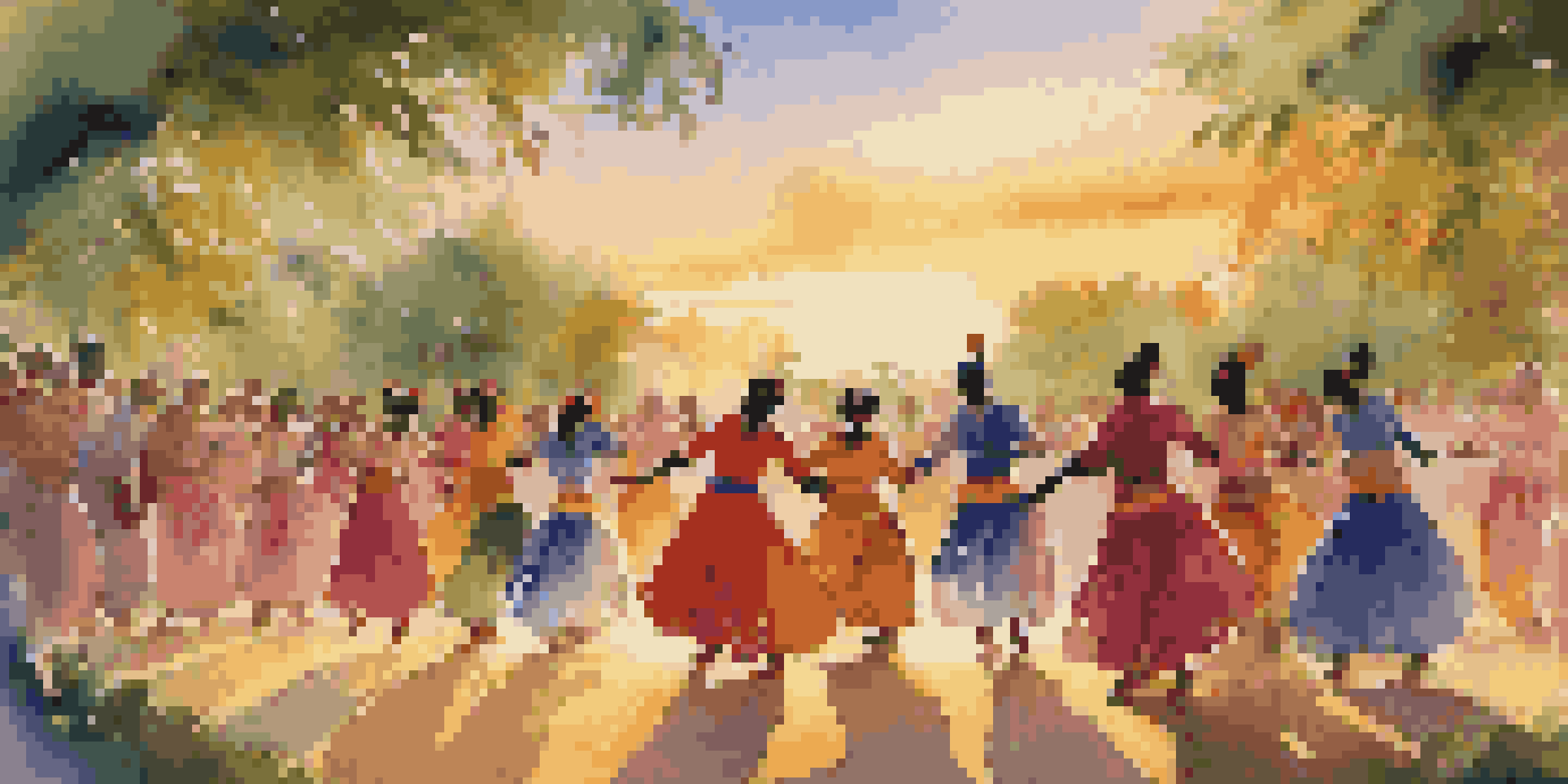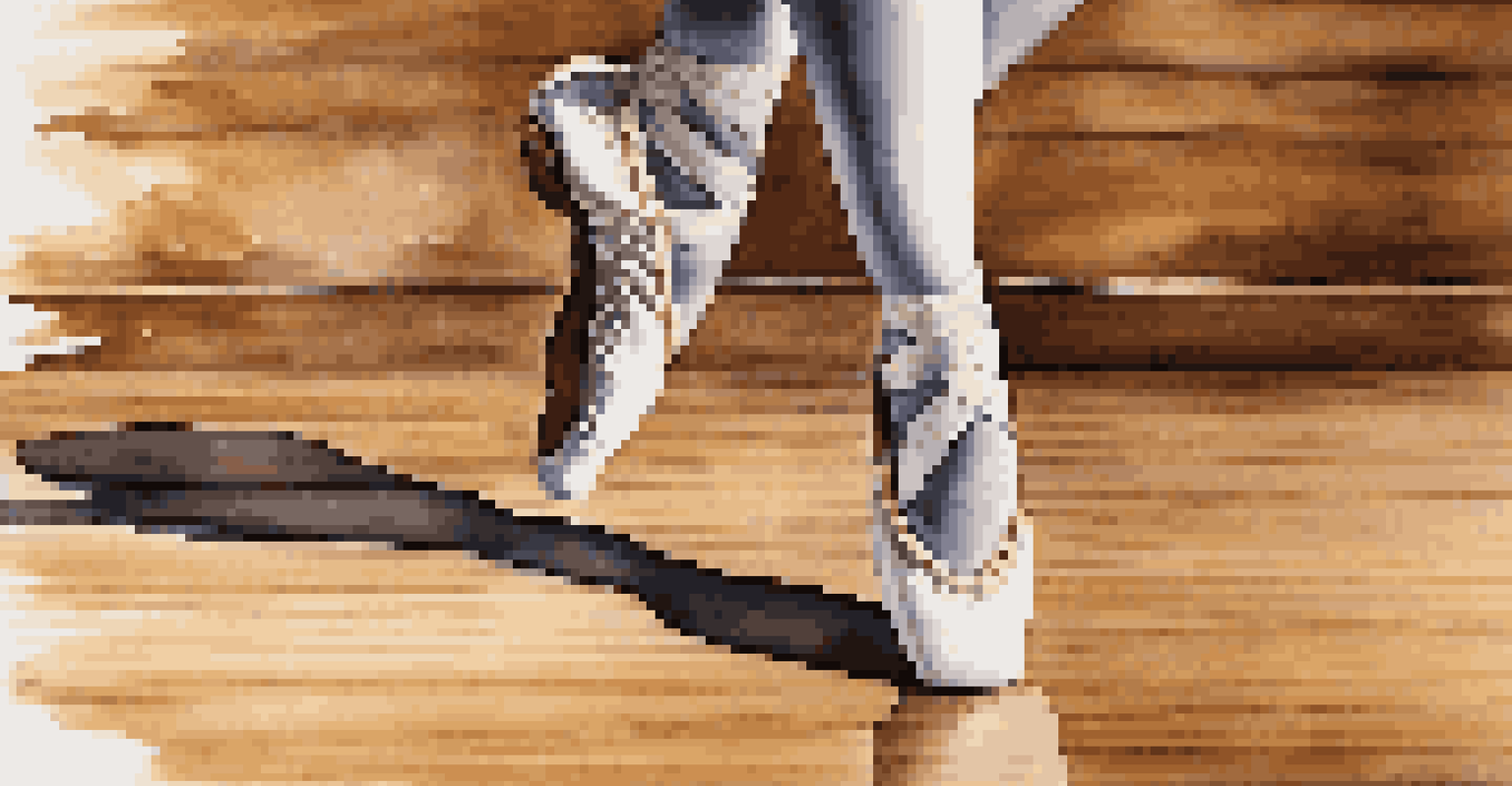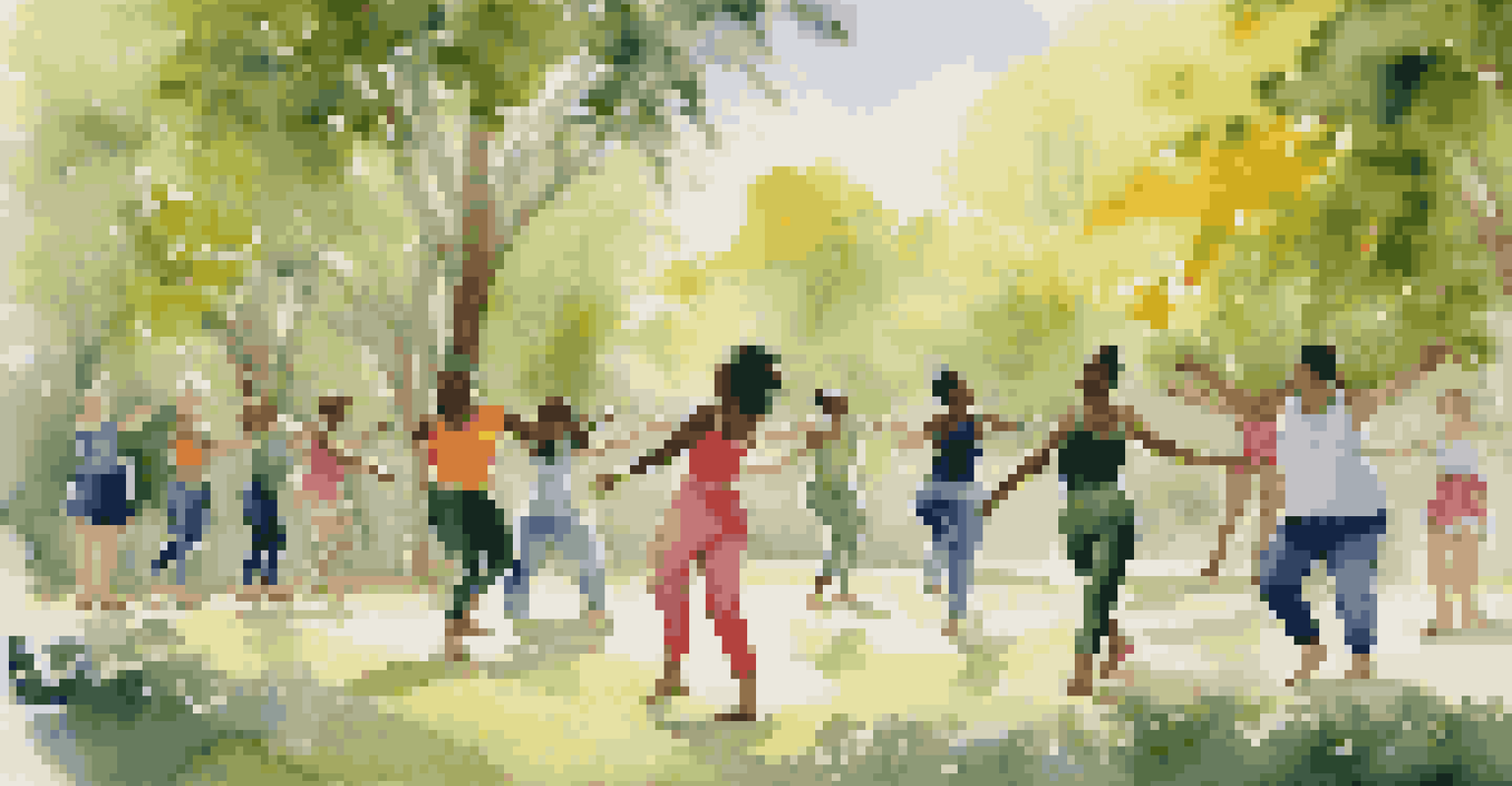Dance Festivals: A Platform for Social Change Activism

The Power of Dance: A Universal Language
Dance transcends borders and cultures, serving as a universal form of expression. At dance festivals, people from diverse backgrounds come together to celebrate movement, rhythm, and shared passions. This communal experience fosters a sense of belonging and connection, which can spark conversations about important social issues.
Dance is the hidden language of the soul.
For instance, the Global Dance Festival brings together dancers from various countries, showcasing styles that reflect their cultural heritage. This vibrant atmosphere encourages attendees to explore the stories behind each dance, often leading to discussions about the challenges faced in those communities. It’s a beautiful reminder that while we may move differently, we share similar hopes and struggles.
This collective experience highlights the potential of dance as a catalyst for change, as it inspires individuals to unite for causes that matter to them. When people dance together, they create a rhythm of solidarity that can resonate far beyond the festival grounds.
Raising Awareness Through Dance Performances
Many dance festivals incorporate performances that address pressing social issues, from climate change to racial equality. These performances serve as powerful storytelling tools, conveying messages that resonate with audiences on a personal level. By intertwining artistry with advocacy, dancers can effectively bring awareness to critical topics.

For instance, the Dance for Change Festival features choreographers who create pieces specifically focused on social justice themes. These performances not only entertain but also educate spectators about the realities faced by marginalized communities. This blend of art and activism encourages audience members to reflect on their own roles in promoting social change.
Dance as a Catalyst for Change
Dance festivals unite diverse communities, fostering conversations that inspire social change and solidarity.
Ultimately, these performances can inspire action, motivating attendees to get involved in local initiatives or support global movements. When dance becomes a platform for social commentary, it transforms from mere entertainment into a rallying cry for justice.
Community Building: Connecting Through Dance
Dance festivals often serve as a hub for community engagement, bringing together local artists and activists. These gatherings create opportunities for collaboration and networking, allowing individuals to share resources and ideas for social change. The sense of community fostered at these events can amplify the impact of local initiatives.
The dance is a poem of which each movement is a word.
For example, festivals might host workshops where participants learn about social issues alongside dance techniques, promoting a culture of awareness and activism. These workshops not only empower individuals but also encourage a collective approach to solving community challenges. When people feel connected, they are more likely to take action together.
By nurturing these relationships, dance festivals help build a network of passionate advocates, all committed to making a difference. In this way, dance becomes more than just a performance; it evolves into a vehicle for community empowerment.
Empowering Voices: Highlighting Marginalized Stories
Dance festivals provide a platform for underrepresented voices to share their stories and experiences. By inviting diverse performers and choreographers, these events challenge the mainstream narratives often seen in traditional media. This representation can empower marginalized communities, giving them a chance to express themselves through their unique art forms.
For instance, the Inclusive Dance Festival actively seeks out performers from various backgrounds, including those with disabilities or from minority communities. By showcasing their talents, the festival not only enriches the artistic landscape but also helps to normalize diverse narratives. These performances can resonate deeply with audiences, fostering empathy and understanding.
Community and Collaboration
These festivals create opportunities for networking and collaboration, empowering individuals to work together towards common social goals.
When these stories are told through dance, they become more accessible and relatable, encouraging broader discussions about equity and inclusion. Ultimately, the visibility gained at dance festivals can lead to greater support for social movements that address these critical issues.
Dance as a Tool for Mental Health Awareness
In recent years, dance festivals have increasingly focused on mental health awareness, recognizing the therapeutic benefits of movement. Many festivals now include workshops and discussions centered on mental well-being, offering attendees a chance to explore the connection between dance and emotional health. This emphasis on mental wellness is crucial in reducing stigma and promoting open conversations.
For example, the Mindful Movement Festival hosts sessions where participants can engage in dance as a form of self-care and expression. These activities not only provide a creative outlet but also encourage individuals to reflect on their mental health journeys. By sharing personal experiences in a supportive environment, attendees can find solace in knowing they are not alone.
As dance becomes intertwined with mental health advocacy, festivals can play a pivotal role in fostering a culture of openness and resilience. This shift not only benefits individuals but also strengthens communities, as shared experiences create bonds that promote healing.
Sustainability Initiatives in Dance Festivals
Many dance festivals are now prioritizing sustainability, recognizing their responsibility to the environment. From implementing eco-friendly practices to promoting awareness about climate change, these festivals aim to inspire attendees to consider their own environmental impact. This commitment to sustainability reflects a growing trend in the arts community toward social responsibility.
For instance, the Eco Dance Festival has adopted practices such as waste reduction, energy-efficient lighting, and sustainable transportation options for performers and attendees. By showcasing these initiatives, the festival not only minimizes its ecological footprint but also encourages participants to adopt similar practices in their daily lives. This creates a ripple effect of awareness and action.
Mental Health and Well-Being
By emphasizing mental health awareness, dance festivals provide therapeutic benefits and promote open discussions about emotional well-being.
By integrating sustainability into their missions, dance festivals can lead by example, showing that art and activism can coexist harmoniously. In doing so, they inspire a generation of dancers and advocates who are committed to creating a more sustainable future.
The Future of Dance Festivals and Activism
As society continues to evolve, so too will the role of dance festivals in activism and social change. With a growing awareness of global issues, these events are likely to become even more intertwined with advocacy efforts. The future may see more collaborations between artists and activists, resulting in innovative performances that address a wide range of social topics.
Additionally, as technology advances, dance festivals could leverage digital platforms to reach broader audiences. Virtual performances and online discussions can amplify messages of social change, allowing for participation from individuals who might not otherwise attend in person. This accessibility can foster a global community united by a passion for dance and activism.

Ultimately, the future of dance festivals holds great promise for continuing to drive social change. By harnessing the power of movement and the collective voice of the community, these events can create lasting impact and inspire meaningful action.